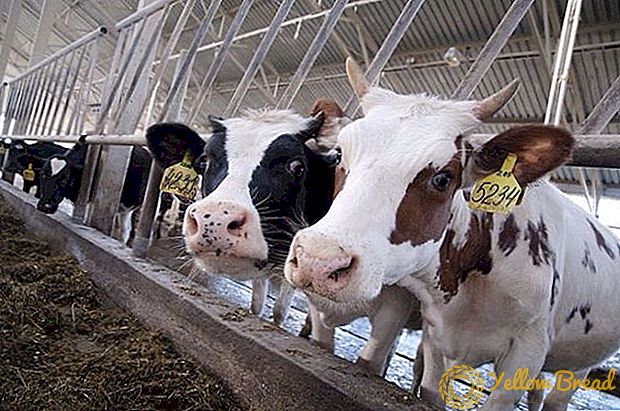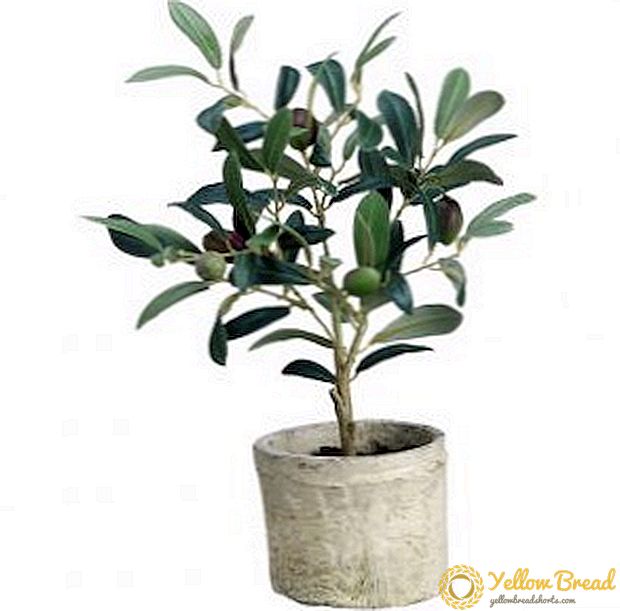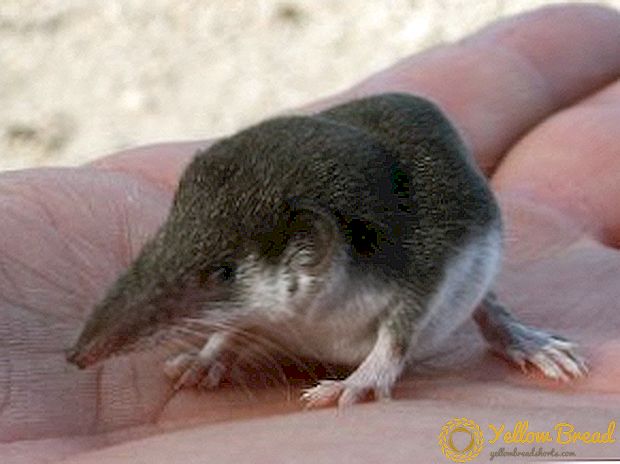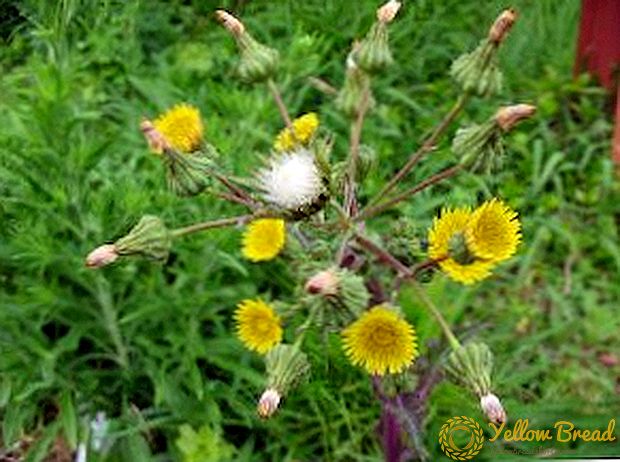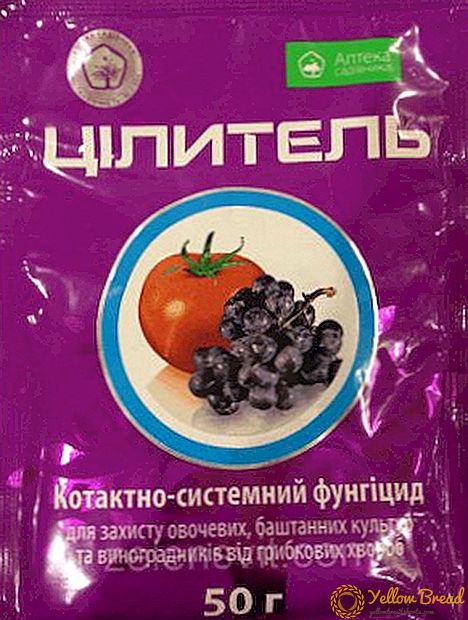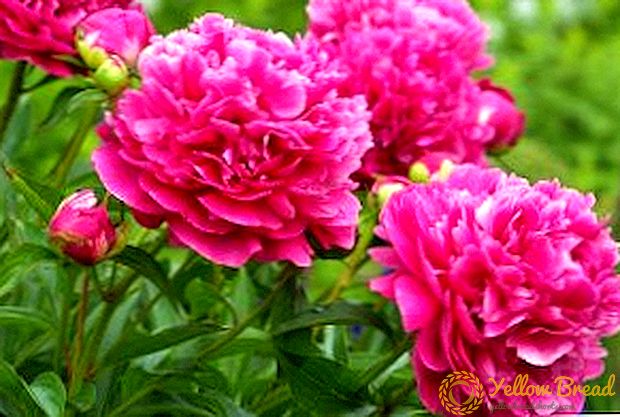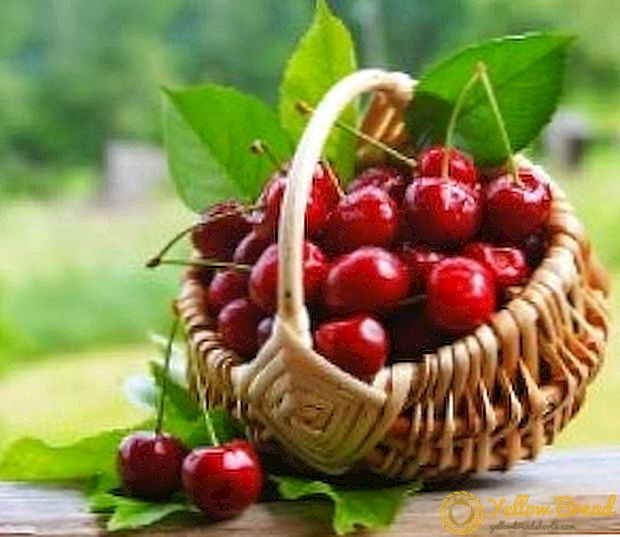
In your dreams, you probably more than once plunged into a luxurious orchard, which could be stretched at your cottage. And if the land is not so good for the garden, how would you like to?
Any infield will be imperfect without a cherry. This beauty will delight you with its flowering in spring, and in summer it will surprise you with succulent fruits.
Many will say that it is impossible to grow a good fruitful cherry in the Moscow region. In this article, we show - it is not. The main secret is to choose the appropriate varieties of cherries for planting. However, it is important to take into account weather conditions and possible climatic disasters.
- Climatic conditions in the Moscow region
- Cherry variety "Apukhtinskaya"
- About variety "Lyubskaya"
- Now about the variety "Youth"
- Cherry variety "Turgenevka"
- Basic rules for growing cherries in the Moscow region
Climatic conditions in the Moscow region

When choosing a cherry, we recommend paying special attention to the winter resistance and frost resistance of a particular variety. It is necessary to clarify that these are two similar, but not identical terms.
But for our region, the frost resistance of the tree is also required, that is, the natural ability of the plant to withstand critically low temperatures, because in winter it can drop to -35 and lower.
Another important point is the possibility of different varieties. to resist infections and diseases: first of all coccomycosis and moniliasis. These are the most common diseases of cherries in the Moscow region.
It is impossible to fight diseases without the use of pesticides; therefore, it is better to immediately choose varieties of cherries that are resistant to such fungal diseases. Briefly about these fungal infections.
Coccomycosis and Moniliasis. If a tree is infected with a fungus of coccomycosis, then its leaves early turn yellow to black speck and quickly fall off. With moniliose, it is not the leaves that suffer, but the berries. They are covered with a white cobweb, like a bloom, and begin to rot - such fruits cannot be eaten.
Now let's talk about the varieties of cherries, which are best adapted to live and grow in the Moscow region.
Cherry variety "Apukhtinskaya"

Tree of this sort low, only 2.5-3m tall, grows as a shrub, having several lower skeletal branches.The fruits are dark red in color, quite large and resemble a heart. It tastes sweet and sour, but leaves a bitter aftertaste.
This is a late variety, its flowering begins in early summer, and the fruits ripen by the end of August. The tree is quite winter-resistant and practically defies coccomycosis. Later flowering is a kind of insurance against spring frosts, high yields.
Fruiting begins in the second year after planting and samoploden variety. Cherry fruits contain many microelements that promote blood formation and maintenance of iron and hemoglobin levels.
But, also, there are disadvantages of the variety. Later flowering is both a disadvantage and an advantage, since such a variety cannot be used for cross-pollination. Late ripening can lead to the fall of the berries, if autumn comes too sharply.
We also highlight the specifics of planting cherries. Since cherry is a stone plant, it loves heat and sun, and therefore the place should be chosen on the southern or south-western slopes of the site and the groundwater should not be closer than 2.5m to the surface of the earth. Seedlings are best to choose two years, with a developed root system, and landing carried out in September.
It is also necessary to note the peculiarities of care for such a cherry. This is one of the most unpretentious cherries, with almost no problems. Fertilizers should be made necessarily when planting: organic (manure, compost) and mineral (superphosphates and potash). Then it is necessary to fertilize the land every 3 years.
It is necessary to water cherries immediately after planting, and then she has enough natural precipitation. Only during droughts additional watering is used. Pruning should begin immediately after planting, leaving only 4-5 branches to form a crown, at a distance of at least 40 cm from the root funnel, subsequent pruning is carried out every autumn so that the crown is not too thick and there is a good harvest.
About variety "Lyubskaya"

One of the oldest varieties of cherry, which is grown in the central zone of Russia, its active study began in the 40s of the twentieth century.
An adult tree in height reaches 2.5-3 meters, which does not require additional equipment for harvesting.
Crown crown sprawling, but not thick, and it will require less effort when pruning. The bark has a gray-brown shade and a cracked surface, and the branches of a curved shape extend from the bark at an angle of almost 45 degrees.In color, the berries are dark red, and the color saturation depends on the amount of moisture and heat.
The flesh is sweet and sour, but the aftertaste remains sour, which many do not really like, so they prefer to give the fruit for processing: wine, compotes or jam.
The biggest advantages of this variety: high yield, trees begin to bear fruit already at 2-3 years of age, and by the age of 8-9 years they enter full capacity. Fruits are well transported and do not lose appearance.
One more thing - this samoplodnaya cherry, which means it can be planted without the obligatory sorts of neighbors. High yields and late flowering also attract the attention of the gardeners of the Moscow region to the "Lyubskaya" beauty.
However, it does not do without unsightly minuses of cherries. Due to the structure of the surface of the bark, the tree during severe frosts gets burns that must be prevented. It also reduces the ability of the cherry to resist fungal infections.
It should be noted that Lubskaya cherry is not a garden's survivor, since on average it lives and bears fruit up to 18 years and only with good care will it be possible to extend life to 20-25 years.
Pay special attention to the specifics of planting and care.When planting, remember that this cherry is very demanding on the soil - make sure that the soil in your garden is not acidic, otherwise you will have to chill it.
Add a lot of organic fertilizer, but do not add too much chemical fertilizer - she doesn't love that.
Watering should be moderate - water should not stagnate near the roots. Cherry practically does not need pruning, however, given the not very good winter hardiness, its roots must be covered for the winter.
Now about the variety "Youth"
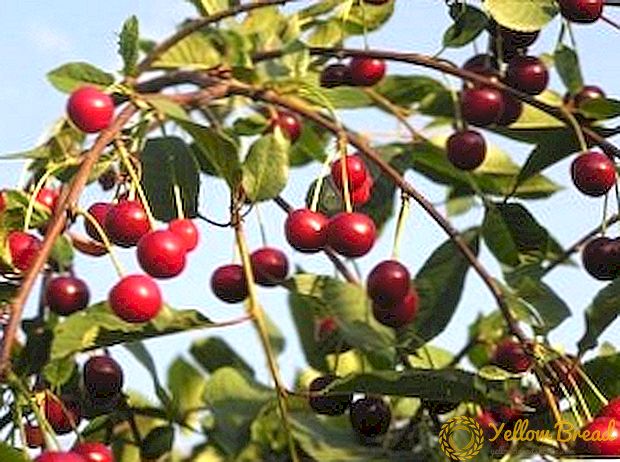
This variety was bred in 1996 by crossing two other varieties: Lyubskaya and Vladimirskaya.
Among the main external characteristics of the variety are the following: cherries can have both woody and bush forms; the variety is medium tall, the height of an adult tree is not more than 2.5 meters, and the average ripening period (the fruits ripen by the end of July).
The leaves are dark green with a pronounced skeletal base. The fruits are dark red with juicy flesh, sweet-sour taste. Remarkably, this cherry is best to eat fresh - there will be more benefits.
Among the strengths of the variety can be noted high yield (annually), resistance to winter frosts, fairly high level of resistance to fungal diseases, undemanding to care.
But its weaknesses are manifested in insufficient winter-resistance of flowers and medium resistance to fungal diseases. It is worth paying attention to the last remark, as during a hot and humid summer, it is possible that these diseases develop.
The combination of all the points described dictates the nuances when planting and caring for the plant. When you decide to plant a Molodyozhnaya variety cherries, choose a sunny place on a hill, so that the cold air does not stagnate at the roots. For this, sandy soil with good water and air aeration is suitable. The land must be neutral (non-acidic).
Cherry variety "Turgenevka"

The variety is bred using natural breeding from the Zhukovskaya variety and is especially popular in the Moscow region.
An adult plant reaches up to 3 meters, and the shape of the crown resembles an inverted pyramid. The fruits begin to ripen in the first half of July, which allows them to ripen fairly well and not crumble.
Bordeaux berries are heart-shaped, the pulp is juicy and sweet-sour to the taste. If the summer is very sunny and with a sufficient amount of moisture, the acidity is almost not felt.
The advantages of the variety are: high yield, resistance to coccomycosis, large berries that tolerate transportation, and tolerance to frost.
The disadvantages include: poor tolerance of frost buds of flowers by the kidneys, which can greatly affect the amount of the crop. The tree has a rather low level of self-pollination, so it is necessary to plant pollinating varieties near it, for example, Lyubskaya or Molodezhnaya.
It should be noted such features of planting and care for cherries:
- do not plant a tree in a valley, as aggravate the situation when the temperature drops, which can lead to poor yield;
- pay attention to the shelter of the tree for the winter - it will help keep the bark intact from pests and diseases;
- during the fruiting period, cherries require additional watering, since the berries will take maximum of water and nutrients;
- The specificity of the crown shape requires attention in pruning the lower tier of the branches, since they can create a dense leafy cover and will not let the berries begin to tie.
We have listed the most common varieties of cherries, which are grown in the Moscow region, however, it is necessary to follow the general rules of cultivation in the region.
Basic rules for growing cherries in the Moscow region
- For a successful planting of cherries, choose a place where there will be a lot of sun, on an elevation, the groundwater will be at a level no higher than 2.5 meters, and the soil will be neutral.
- It is necessary to water the cherry at least during such periods: in the fall, when the leaves will fall, before flowering and after flowering.
- Fertilize the soil should be every 3 years - this applies to organic fertilizers, and mineral need to be replenished every year.
- Start pruning immediately after planting, then you can do it 3 times a year to form a crown and avoid excessive branch thickness.
- Be sure, even if you chose a frost-resistant and winter-resistant variety, cover the trees for the winter and whiten the bark at a distance of 50 cm from the ground. This will prevent frostbite, protect against infections and pests.

